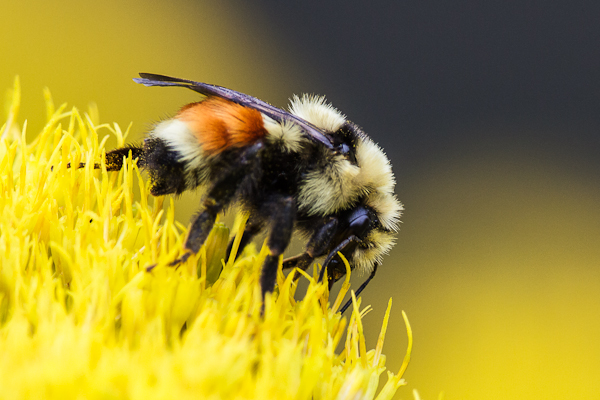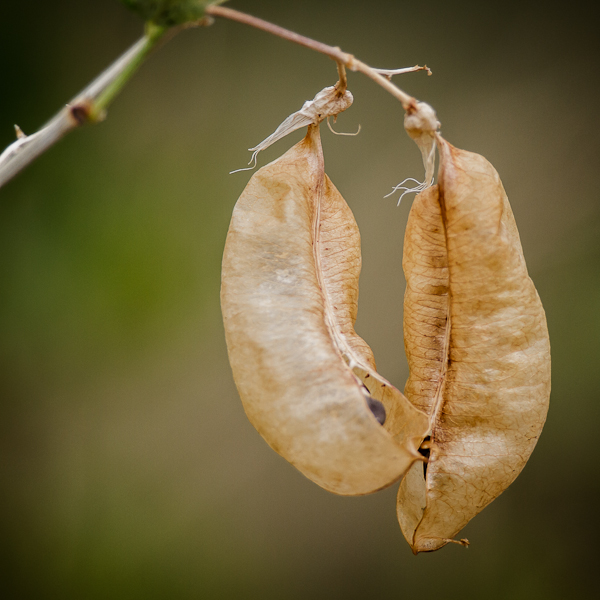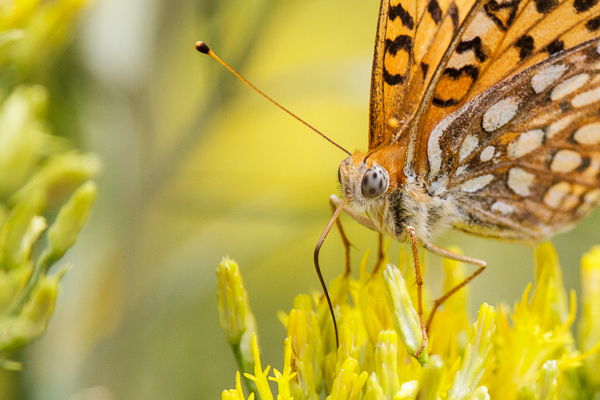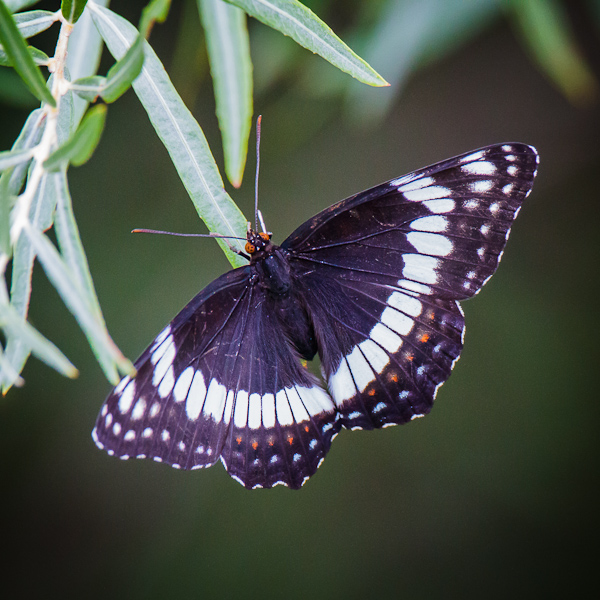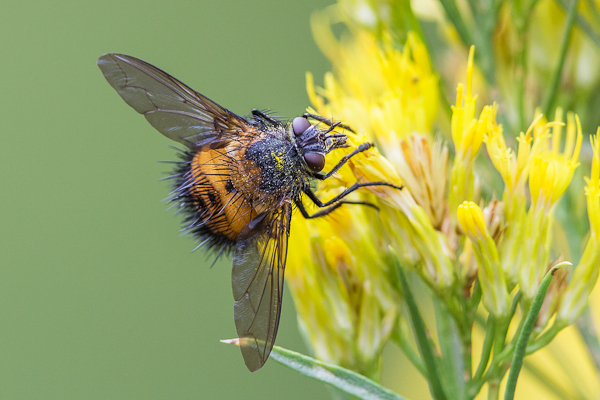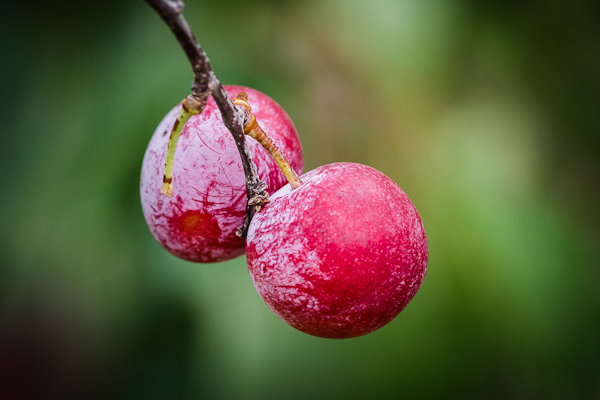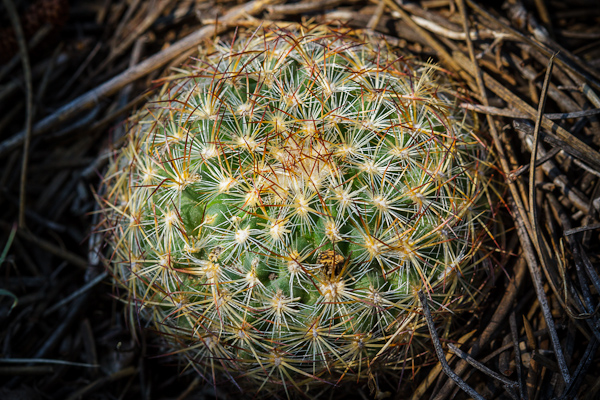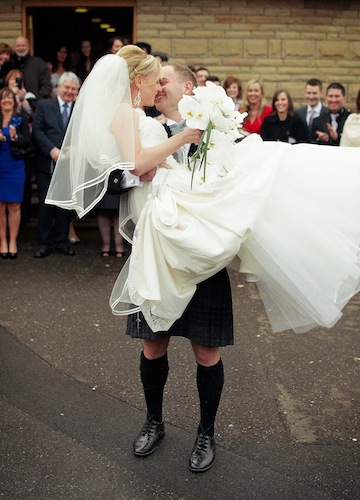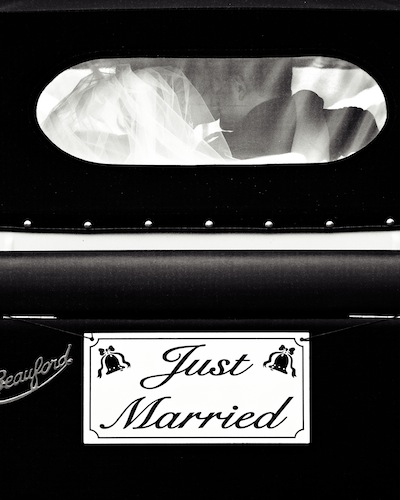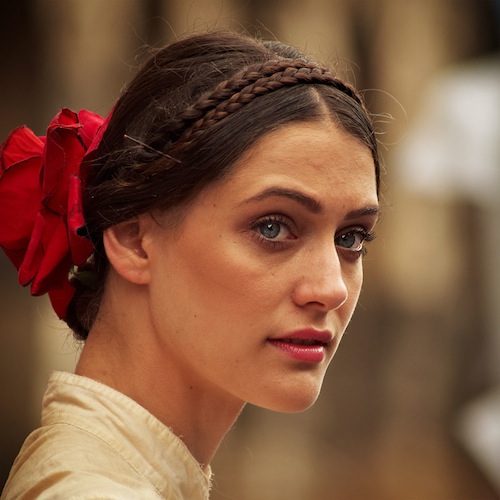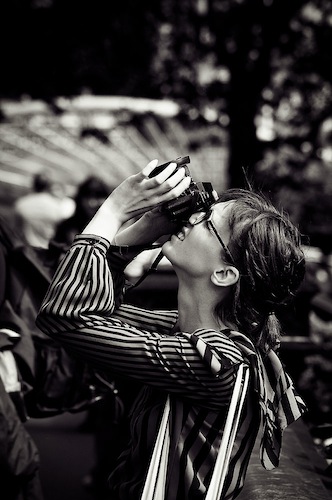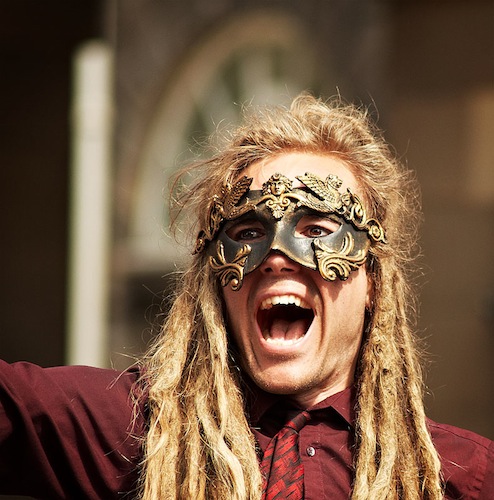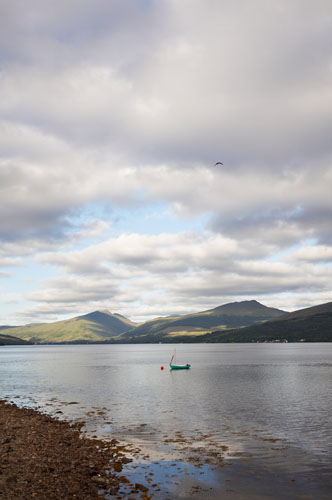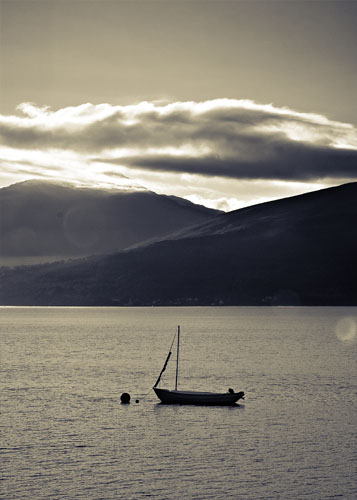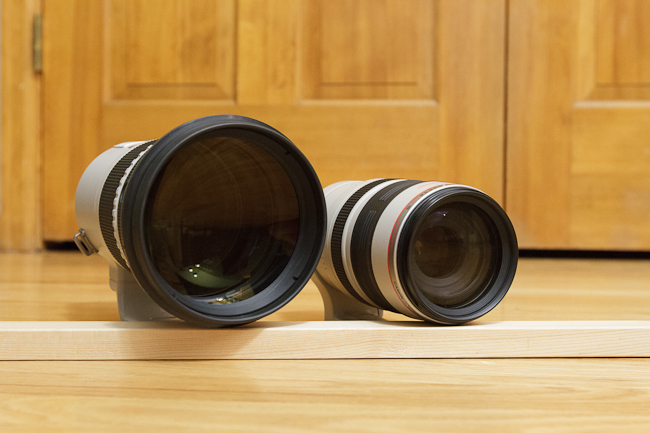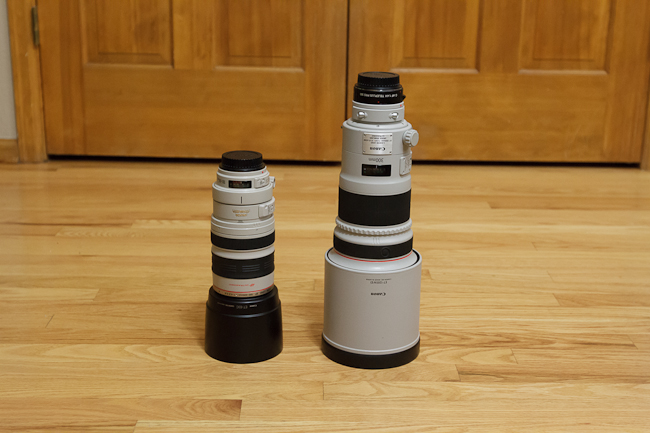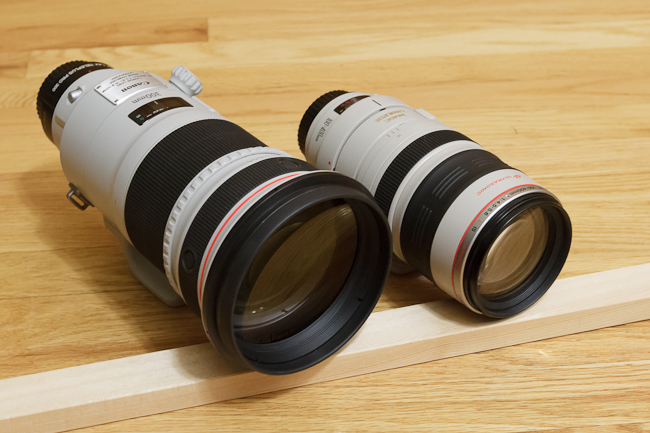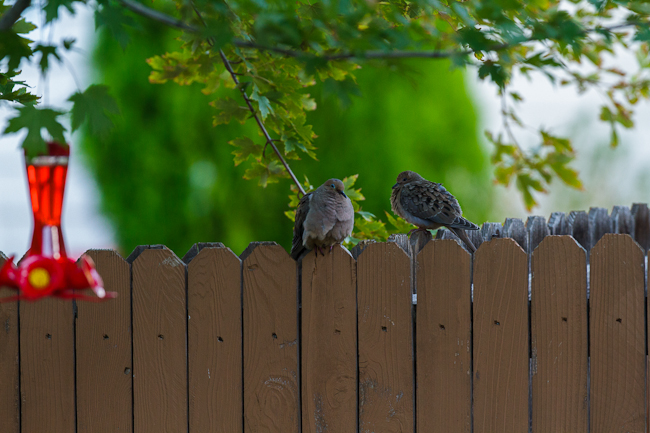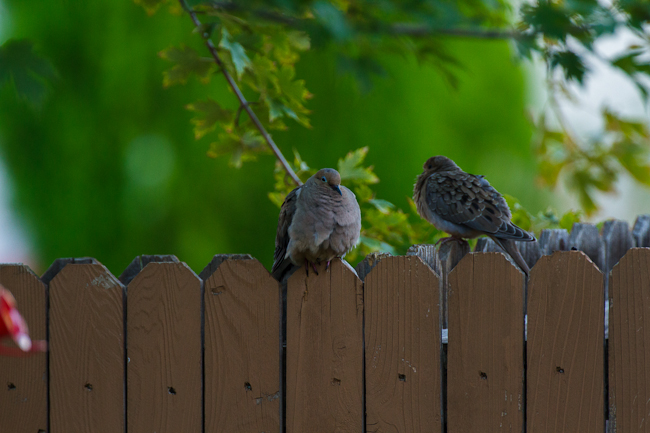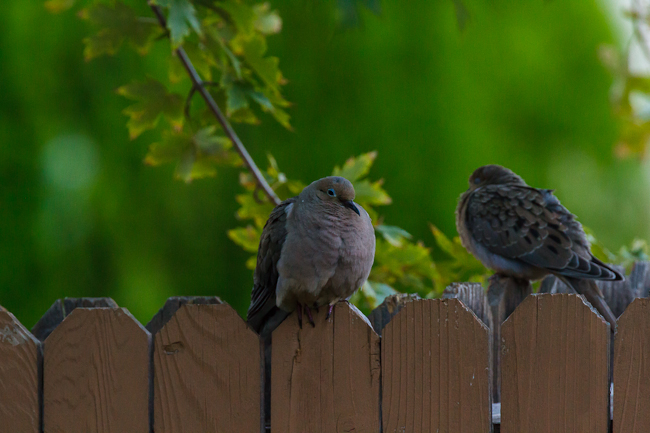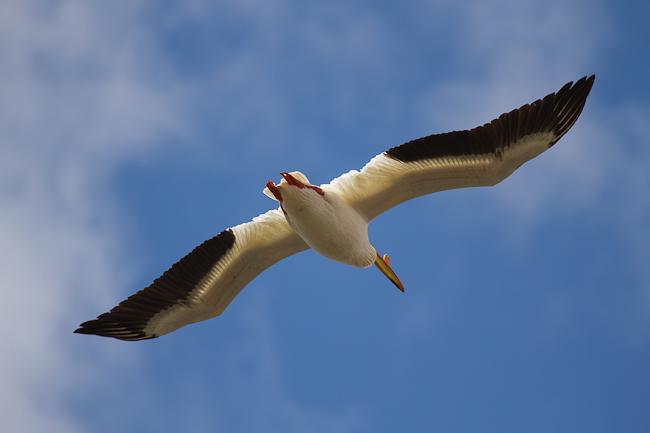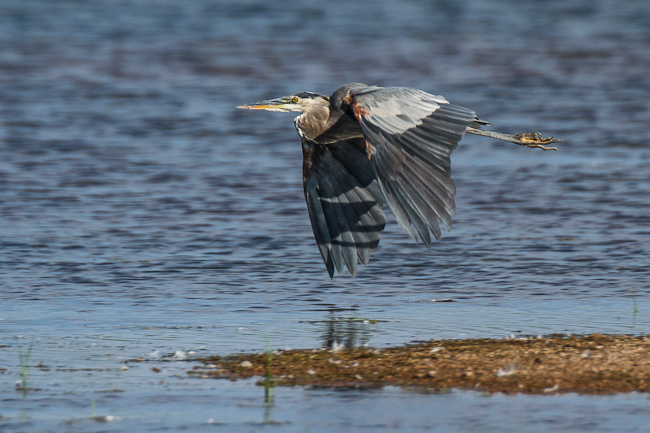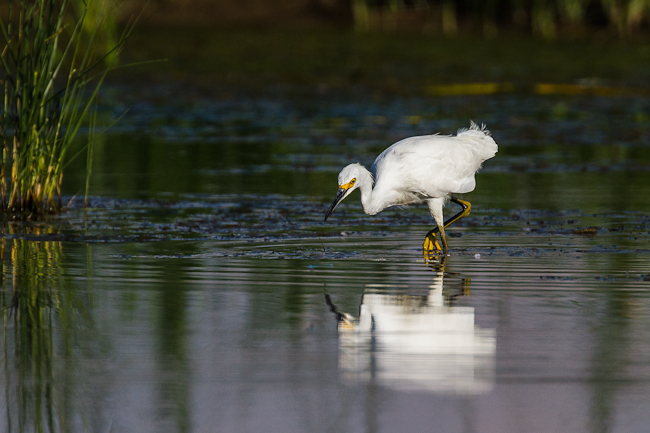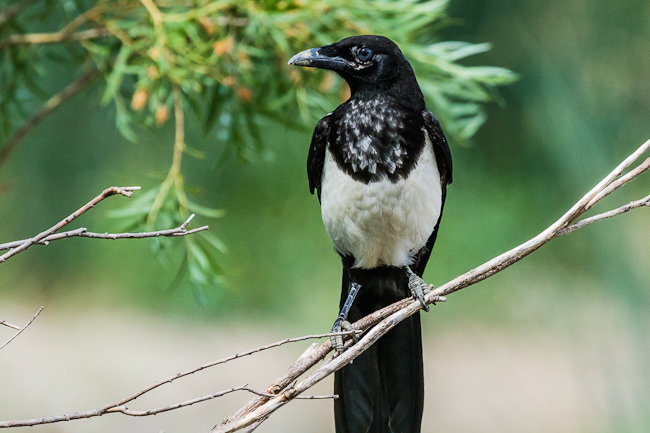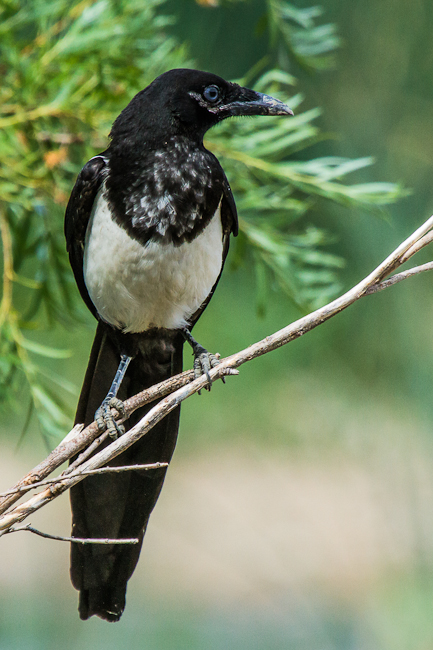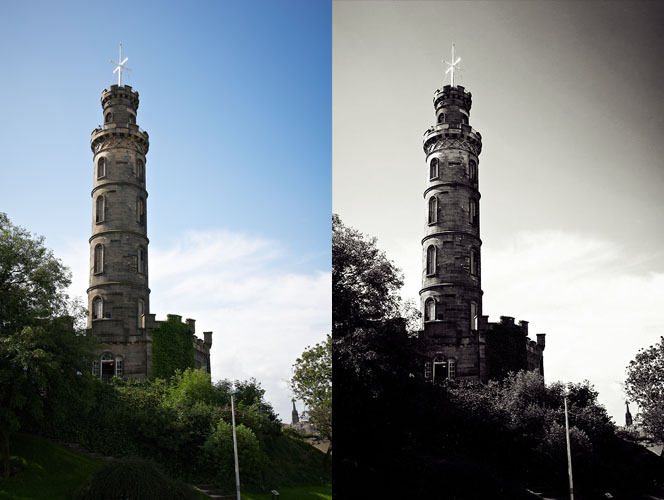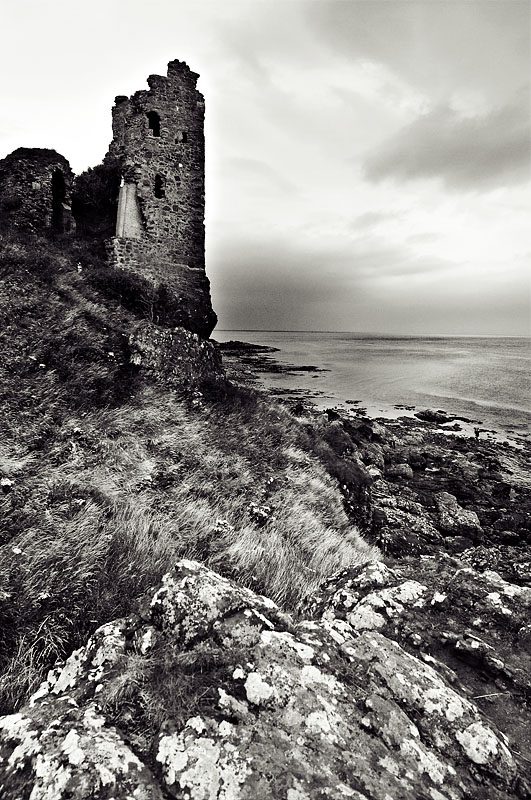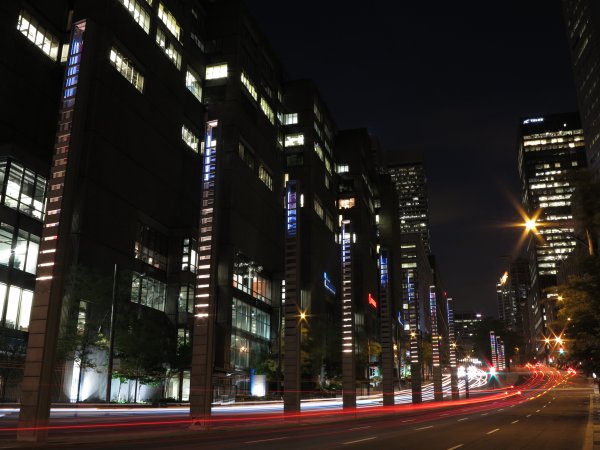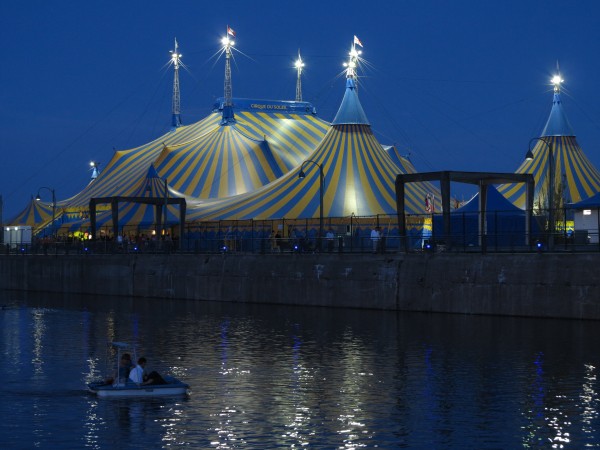Archive for September, 2012
Pseudo-Macro Photography with a Telephoto Lens
Macro photography is one of the all-time favorite pastimes of photographers. The enlargement of the small and microscopic to huge scale, the exploration of detail the naked eye cannot see. Sometimes it’s tough to decide what kind of photography to do on a day trip, when you can only carry so much gear. As a bird photographer, I tend to need large lenses and heavy gear, which makes lugging around a backpack full of additional gear impractical much of the time. Over the past year, I’ve come to enjoy a similar pastime that I call Telephoto Pseudo-Macro.
Strictly speaking, macro photography involves the use of a macro lens, which is capable of projecting a scene at 1:1 magnification (100% scale) onto the sensor. This “life size” scale is why its called macro, as we live and exist in the world at macro scale…life scale. Anything less than a 1:1 magnification, and you actually have close-up photography. The kind of fine detail that true macro photography extracts from a subject is quickly lost as your magnification factor drops with shorter lenses, however with a telephoto lens, you can often get very close to a subject and magnify them enough to become “psuedo-macro”. Not quite life size, but large enough for fine detail to exhibit well.
The benefits of using a telephoto lens for close-up “macro” photography work is two-fold. First is working distance, which can be several feet. This is great for photographing insects and other moving subjects that might take off if bothered. A long telephoto lens, such as a 500mm or 600mm lens, have relatively close minimum focus distances, and their narrow field of view will actually magnify your subject quite a bit on sensor. The second benefit is that you can use a teleconverter to gain even more focal length at the same minimum focus distance. A 300mm lens with an MFD of 4 feet with a 2x TC becomes a 600mm lens with the same 4 foot MFD. Your subject size grows in the frame by the ratio of the focal lengths squared, so in the this case, 300mm -> 600mm, your subject is 2.25x more magnified than before.
Despite the greater subject distance, most prime telephoto lenses offer superior image quality, sharpness, color, etc. So even at a distance of several feet, you can still extract a lot of small features at incredible sharpness. Renting a high-end lens like the Canon L-series supertelephoto lenses or Nikon’s G supertelephotos will offer the best sharpness in any lens with good working distances. Getting a lens that has some kind of image stabilization or vibration reduction is a huge plus for insect pseudo-macro photography. You can stop thinking about shot stability, and start composing your subject in-frame.
With a fast telephoto lens and a good TC, you frequently have a maximum aperture of f/4 or f/5.6. This allows you to retain autofocus capability, which can be a godsend for chasing down fast-moving insects guzzling up flower nectar, or flora blowing in the wind. Another benefit of using a telephoto lens is the background blur, or bokeh. At focal lengths beyond 100mm-200mm, noisy, cluttered background instantly blur into a creamy smooth backdrop for your key subject.
So, the next time your out and about looking for wildlife or birds, keep an eye on the nearby flora and ground. A telephoto lens, with its thin DOF, can make an excellent tool for pseudo-macro photography. And when your out and about, don’t forget to look strait down! You never know what subjects you might find (and you might save yourself some prickly pain, too!)
6 Tips for Wedding Second-Shooters
Like many serious amateur photographers, I have thought about making money from my hobby. Landscape and stock photography is super-saturated these days, and there’s not a great deal of money in it, so I decided to try my hand at wedding photography. It’s neither easy or advisable to jump straight into it, but I was lucky enough to have a friend of a friend who already had a few weddings under his belt who needed a second shooter, and so I jumped at the chance to help him out on a couple of occasions.
In this post I’ll try and give you some tips based on my (admittedly limited) experiences.
At the first wedding I assisted on, I was tasked with shooting the groom’s preparations on my own first of all, before shooting the rest of the day, right up to the first dance, alongside the main photographer. This meant I started at 11am and finished around 10pm. It’s a long shift, but what makes it tiring is the fact that you are pretty much switched on all day. You need to be constantly on the lookout for photo opportunities, especially because as the second shooter you will often be in charge of capturing candid shots while the main photographer handles the posed ones.
Lesson learned, for my second wedding I made sure to get an early night the night before, and to bring along some energy drinks and chocolate bars for a quick energy boost when needed throughout the day.
2. Consider renting a lens
One of the biggest advantages of second shooting is that you get to build your portfolio while you gain experience. While the guy I was assisting had invested in a top-end 24-70mm 2.8 lens, I was only using my consumer level lenses. Now, I managed to get plenty of useable shots, but they all would have been much better with a pro level lens, and I’m sure I would have increased my proportion of decent shots as well, thanks to the faster shutter speeds afforded by an f2.8 maximum aperture. Since my second-shooting experiences, I have had the opportunity via Stack Exchange to use some pro-level lenses and the difference in image quality is astounding.
I would absolutely not recommend buying such a lens (unless you’re really well-heeled) purely for dipping your toe into the wedding waters, but I would recommend renting. You can usually rent a lens for a weekend for next to nothing, and the benefits to your portfolio will be worth it and then some. The main photographer will also likely be much happier with the results as well.
3. Shoot duplicates – lots of duplicates
Put your camera in continuous shooting mode and use it. When you’re shooting formal or posed portraits, the wedding party will be constantly distracted by family members out of frame. They’ll blink. Younger members of the wedding party will run around like headless chickens. Shots will get messed up. Take 3 or 4 of each shot and you increase your chances of getting the shot, or being able to create the shot in post by compositing shots together.
4. Invest in another battery and memory card
If you haven’t already got them, you need a spare battery and memory card for shooting weddings. I was in two minds at first – hey, I’ve shot whole week-long vacations on one battery before now – but got a spare battery just in case for my first wedding shoot. And it was a good job I did: I burned through my first battery by the end of the formal shots. Constant shooting and writing to the card drains the battery so much quicker than the occasional snap on vacation. As for memory cards, you can never have enough. I shot 1600 shots at my first wedding, 1000 at my second (because I was following tip 3!). Capacity isn’t the only issue – what if a card fails? Spare cards are very affordable, so invest in a couple of extra ones and you’ll be good to go.
5. Be Adaptable
Weddings are great occasions, but they are also pretty damn hectic, especially in the run up to the main event. As I mentioned above, I was assigned to shoot the groom’s preparations in the morning. The plan was to shoot him getting ready, then get some shots with the best man and ushers. However, the situation was complicated by the fact that the groom was having to look after his baby son while getting ready, and the best man and ushers were nowhere to be found. I was under an obligation to get some shots both for my main photographer and for my portfolio.
In the event, I switched my plan to get posed shots of the groom’s party and went for more or less last-minute candid shots of them assisting the groom, when they turned up. My point is, you need to be ready for any eventuality. Have a general plan in place, but as Eisenhower said, no plan survives the first three seconds of battle. Be prepared to change your plans and adapt accordingly.
6. The Five Ps
Or, Prior Planning Prevents Poor Performance. Just because you’re ‘only’ second shooting, that doesn’t mean you should rely on the main photographer to carry the day. You owe it to him, yourself, and the bride and groom to do a good job. Firstly, get as much information as you can from the main photographer. The who, what, where and when is obvious, but the more details you can get the better prepared you will be. What colour are the bridesmaids dresses? Are the parents of the bride and groom on good terms with each other? How are the happy couple getting to the reception? Where does the main shooter want you during the ceremony? What does he want you to do during the portrait shoot?
Next, scout the location. Try and visit at the time of day the wedding will be taking place so you can assess the light. What kind of shutter speed are you going to get? Where are the best locations to take the group shots? How about the romantic shots of the happy couple? If it rains, is there somewhere indoors where you can shoot?
Get your kit ready. Make a checklist and use it. Charge your batteries. Format your memory cards. Clean your lenses. Pack your bag with just what you’ll need for the day – graduated neutral density filters and reversing rings won’t be much use, ditch them. If you’ve got a flashgun, do you have enough batteries for it? And so on. Be meticulous in your preparation and your day will go so much smoother.
5 Street Photography Tips
Street photography is one of the most popular forms of the art, but it can be tricky to get good results; it takes time, patience and a good eye, not to mention a little chutzpah sometimes! Here are some tips to help get you started.
1. Build Your Confidence
It can take quite a bit of courage to shove your camera in someone’s general direction and actually take a shot. Most people actually don’t care, but it still takes some confidence to actually press that shutter button.
One way to build your confidence is to try shooting in busy events where there are already plenty of photographers around. Most of the shots in this post were taken at the Edinburgh Festival Fringe. For a few weeks every August, the streets of Scotland’s capital city are packed with performers, touts, tourists – and photographers. Being just one more photographer amongst hundreds meant I had no compunction about pointing my camera at pretty much anyone, least of all the performers – or other photographers!
Try to be open when you take a shot – you’re not doing anything wrong after all. If your subject notices you taking the shot, give them a smile and thumbs up. You’ll soon learn that most people don’t really care. So have a look around for an upcoming event like a fair, car or air show where you won’t be the only photographer and not feel too self-conscious.
2. Use that confidence
Once you’ve built your confidence (or if you’re lucky enough to have it anyway) use it to talk to or otherwise interact with people. Something as simple as pointing to your subject, then the camera to let them know you’ll be taking a shot can initiate a reaction that makes a great photo – whether it’s a smile or a frown. Show your subject the shot and be ready to capture their reaction, or their friends’.
3. Choose your weapon
Or rather, your equipment. Your lens will determine what kind of street photography you’ll be doing. A medium length prime such as a 35mm is a flexible option capable of handling full street ‘landscapes’ right up to three-quarter length portraits on a crop sensor camera. A long lens, say 300mm, will allow you to get more candid shots. Personally I prefer a 70-300mm telezoom. Try both wide-angle and long lenses to find out what suits you best.
4. Consider black and white
Black and white has a couple of advantages when it comes to street photography. Firstly, you’re less likely to get the opportunity for street photography during the Golden Hours, an hour after sunrise or before sunset. You’ll more often than not be shooting in the middle of the day, when the light is worse. Black and white conversion allows for punchier, more dramatic midday shots than colour. Another advantage is that black and white pares away distractions in the form of colour. This is especially true of portraits; the standard phrase is that colour shots capture the clothes, while black and white shots capture the person.
5. Pick an aperture and stick with it
In street photography you often need to think fast and just get the shot, so consider picking an aperture and sticking to it to free you up from thinking about settings. ‘f/8 and be there’ were the words to live by for photojournalists in days gone by. f/8 was aimed more at ensuring a vital detail was captured, and is perhaps not the best choice for the more creative art of street photography. f/4 will give you some creative shallow depth of field and help you get a decent shutter speed for sharper shots, while giving enough depth to prevent focusing problems.
You can either use Aperture Priority mode to fix your aperture and let the camera handle exposure, or if you’re more confident you can use Manual mode to enable you to adjust shutter speed on the fly for more creative results. One final advantage of using one aperture throughout a shoot is that it lends a certain consistency of style across the shots, which can make a street photo project hang together well.
Thinking Outside the Box: Telephoto Landscapes
Wide angle lenses are for landscape photography and telephoto lenses are for wildlife and portraits, right? Wrong. Lens manufacturers and camera retailers would like you to believe it, but it just ain’t so. The truth is, no one lens is ‘for’ any one type of photography. Granted, some are more suitable – a 14mm headshot isn’t going to be flattering – but there are no hard and fast rules to say what you can and can’t do. Photography is an art form after all. In this post, I’m going to take a quick look at using telephoto lenses for landscape work.
In many cases, I actually prefer longer lenses for landscapes over ultra wide-angle ones. Renowned war photographer Robert Capa famously said “If the shot’s not good enough, you’re not close enough”. That’s very true, but it’s hard to get closer when you’re standing at the edge of a cliff or the top of a mountain. What you need, in those cases, is a longer lens. The main advantage of a long lens is that it lets you crop out all the extraneous, distracting surroundings and just focus (literally and metaphorically) on the most interesting part of the scene.
Last month I rented a Nikkor 14-24mm 2.8 lens – widely regarded as the best lens of its type in the world. I took it up to Scotland, land of lochs and mountains, with a view to getting some photographs of grand vistas. However, while the lens is technically excellent, and I did use it for certain shots, I found that in some cases my cheap Tamron 70-300mm produced what was in my opinion a better shot. Take the two shots below for example:
Here you have a typical Scottish scene – a loch, mountains, and a fishing boat. The boat is naturally the focal point of the scene – the mountains and loch are the backdrop. But because of the wide angle (this was taken at 14mm), the boat is pretty much lost amidst the wavelets. Standing as I was on the shore, even a more standard lens like an 18-55mm would have trouble getting an ideal shot. But switch to a relatively long telezoom and:
You crop out all the extraneous surroundings and just focus on the most interesting part of the scene. (This shot also shows the importance of waiting for half-decent light).
Here’s another example, a ‘classic’ wide-angle sunset. At a wide angle, it’s really not very impressive:
The colour is kind of nice, but the shot itself is mediocre – anything interesting in the view itself is tiny and lost. But with a longer lens:
Instant interest. The long lens allowed me to get right in on the misty silhouettes of the town, the orb of the setting sun, and the most colourful part of the sky.
So, if you haven’t tried using your longer lenses for landscape photography, it’s definitely worth a try. There are a couple of things you can do to ensure good results:
Use a tripod. Longer lenses equal more noticeable camera shake, so a tripod is more or less essential for the best image quality.
Use a polariser. The more air the light is travelling through (i.e. the further away your subject is), the higher the likelihood that it will be affected by haze. A polariser can work wonders for eliminating this, so if you’ve got one that fits your long lens, use it.
Give it a go, you might be surprised at the results.
Birding Tips – Boosting Your Kit, Using the Gear & Getting Close
Bird photography can be a very rewarding endeavor, be it as a hobby, or semi- or even fully professionally. It can be a fairly complex endeavor as well, one requiring considerable patience at the best of times. Bird photography also often requires advanced, and sometimes very expensive, equipment, as well as the ability to use it. If you are a fledgling bird photographer, or can’t afford expensive gear, here are some tips to help you temporarily beef up your kit and get some good shots. Even if you can’t afford to buy a Canon 1D IV or 1D X and the EF 800mm f/5.6 L, a kit often considered “the birders kit”, you can still get what you need, and make your time with it worth while.
Renting Gear
Some types of photography, such as bird photography, simply require good gear. You can try to capture world-class photographs of birds with entry-level equipment, and if you have a phenomenal ability to get close to birds without scaring them off, you might capture some great shots. However to really push the limit, and maximize your potential…bird whisperer or not…you need a high end lens at the very least. If you have some disposable cash, you can always pick up either the EF 100-400mm f/4.5-5.6 L IS USM or the EF 400mm f/5.6 L USM for Canon, the AF VR Zoom-Nikkor 80-400mm f/4.5-5.6D ED or AF-S Nikkor 300mm f/4D IF-ED for Nikon, or their counterparts for the brand of your choice. These lenses are within grasp of most middle-class photographers who can spare around $1400 – $1800 street price (give or take a hundred). These lenses offer good image quality, and they are all fairly easy to carry around, even for hours at a time. The zoom lenses offer a nice degree of versatility as well.
Proper bird photography, though, really requires more. Birds, both large and small, are packed with fine detail. Feathers might as well have an infinite level of detail. At a “safe” distance that won’t scare a bird away, you might pick the shaft and a feathers vanes, but you’ll be lacking the fine barb detail in each vane. When you have enough resolving power to really pick up that fine feather detail, particularly around the eyes and beak, clearly and sharply, that’s when a photograph moves from “good” territory to “excellent” territory. Achieving this, to borrow a term from Roger Clark of ClarkVision.com, means getting as many pixels on subject as you can. The best way to do this is to get close, however that is not always an option, and it always has it’s limits. Puncture a birds bubble of comfort, and…well…you just won’t have a subject. The other, safer way to do this is to get a longer (and preferably fast) lens.
You are already thinking that’s an impossibility, and if your thinking in terms of buying a nice supertelephoto lens, you would be right. Buying isn’t the only option these days, however. Lens rental has become a popular theme in the modern world where almost half of everyone has a DSLR. A site like LensRentals.com makes renting a high quality, fast, supertelephoto lens a breeze, and within grasp of a far greater pool of photographers. A four-day rental (around a weekend) of the Canon EF 300mm f/2.8 L II IS or the Canon EF 500mm f/4 L IS is less than $300. You can throw in a 1.4x or 2x teleconverter and still come out less than $300 for the weekend. This is an excellent way to temporarily boost the level of your kit, and make some excellent photographs.
How to Choose a Lens
I generally consider myself to be in the same boat as most bird photographers…unable to afford the kind of gear that will completely free my potential and allow me to capture the kind of fantastic shots one might see from the likes of Arthur Morris or Clemens Vanderwerf. I may be in a slightly better position, as I’m single with a fairly high paying job, so I can enjoy the fruits of my labor by buying good gear more often than the average photographer. However, when it comes to spending thousands of dollars, or even more than ten thousand dollars, on a single lens…even I balk at such a thing. I decided to garner the benefits of renting lenses to determine which lens would really serve my needs, and make some great bird photographs along the way. In my case, I rented the Canon EF 300mm f/2.8 L II IS and the Canon EF 2x TC III from LensRentals.com for a couple weeks, and have learned a great deal.
When renting, you have to consider your goals, and pick the lens that will help you achieve them. In this case, I did not want to sacrifice hand-holdability and weight in order to gain image quality and lens speed. I really needed more reach with respect to the 100-400mm lens. Preferably double the reach (twice the focal length, or 800mm) thatI had would have been ideal, but an increase of 50% would do as well. At about 8.5 pounds the EF 600mm f/4 L II IS is too heavy, and the EF 800mm f/5.6 L IS comes in even heavier, for a reasonable walk-around lens. The EF 300mm f/2.8 L II IS, being one of Canon’s newest generation of lenses, was just on the border of too heavy at about 5.2 pounds…but not too heavy that I couldn’t carry it around. My own EF 100-400mm is about 3.2 pounds, which is fairly light for a telephoto lens. Combined with a 2x teleconverter, the EF 300mm f/2.8 makes for a 600mm f/5.6 lens, which sounded just about right to meet my goals. If you have a tripod with a solid ball head or gimbal mount, then you could easily pick up either a 500mm, 600mm, or 800mm (if available) lens and swing it about all day on the tripod without any fatigue.
A key factor in picking the right focal length has to do with reach. The more reach you have, the more you’ll be able to achieve the critical factor to IQ in bird photography: Pixels on Subject. The general idea is that the more pixels of your sensor comprise your subject, the better…the clearer, cleaner, crisper, sharper, and contrasty…your subject will be. Another way to put it is the more reach you have, the more likely you are to fill the frame. You don’t generally want to actually fill the entire frame with a bird…you still want some white space, but you want the bird to be larger than 50% if you can achieve it.
A general rule of thumb for picking a focal length, remember that for every doubling of focal length, you halve the angle of view (in any dimension, horizontally, vertically, or diagonally). A half-angle view means the subject quadruples in size. Or, the subject size increases as the square of the change in focal length. If you move from 400mm to 800mm, our subject will grow by a factor of (800/400)^2, or 4x. This is because at half the angle of view, the 800mm lens is capturing 1/4 of the frame as the 400mm lens. If you took a 2×2 grid of photographs, one of the upper left, upper right, lower left, and lower right of the same area the 400mm frame represents, you’ll effectively have the same thing, only with four times as much detail. If a bird occupies the center 25% of the frame at 400mm, they will well and truly fill the frame at 800mm.
One needn’t go quite that far, though, not unless you have some very tiny birds at a good distance that you want to photograph. If you move from a 400mm to a 600mm lens, your subject will grow by a factor of (600/400)^2, or 2.25x. That would mean a bird that occupied the center 25% at 400mm will now occupy the center 57%. A 500mm lens with a 1.4x TC, or 700mm, will increase the factor to (700/400)^2, or 3.1x, making the same bird occupy the center 77% of the frame. This information is key to choosing the right lens for the kind of birding you want to do. That will largely be determined by the size of bird, and how you’ll photograph them.
How much frame-filling, or fill-factor, you want might also depend on how much cropping power you have and how much cropping leeway you need. If you have a lot of pixels and want some freedom to recompose during post, then you will probably want your subject fill-factor to be closer to the 50% mark than the 75-80% mark. If you want to be able to change frame orientation from landscape to portrait, then you might even want your subject fill-factor to be closer to 40-45%…however your subject detail will suffer at this point. If you are using a tripod and one of Canon’s top-end telephoto lenses, framing vertically in-camera is a breeze, as all of their telephoto lenses have an easy lock-nob on the tripod ring on the lens. When loosened, you can easily rotate the whole camera and lens within the tripod ring while it is still mounted to change orientation.
Types of Birds and Bird Photography
There are several types of bird photography, determined by the kind of bird and the size of bird. By size, you have very small, small, medium and large. Very small birds might be your small passerines and small waters, such as Chickadees, Sparrows and Sand Pipers. Small would be the size of a Dove or Pigeon, or a full-grown Killdeer. Medium sized birds would be along the lines of hawks, some egrets like Snowy Egrets, Gulls, and Ravens. Large birds would be along the lines of eagles like the Bald Eagle, herons like the Great Blue Heron, Green Heron or Night Heron, storks like a Wood Stork, etc. A very few birds might also fall into the category of “giant”. This category would obviously contain birds like Emus and Ostrich if your lucky enough to photograph them, however some birds like pelicans also fall into this category when they are flying…the American White Pelican in particular is simply gargantuan when it’s flying, with a wing span over nine feet wide!
In addition to size, there is also the kind of bird photography you aim to do. This can be difficult to classify, as one could infinitely divide types of bird photography on a whole variety of subjective criteria. To keep things ultra simple, there are only really two key types of bird photography: Non-flight and flight. To make that a little easier for the tongue, I like to call it Activity and Flight photography. Birds have a whole wide range of activities they involve themselves in, from foraging, eating, preening, mating, dozing, singing, etc. that don’t necessarily involve flight.
Birds in flight, or BIF, is a whole different story, and will ultimately impose different requirements on the kind of gear you use. Finally, you can sub-classify both types of photography as either walk-around or stationary. Walk-around photography will impose weight-limits on the gear you use (unless you’re just a beast!) Stationary photography involves a tripod, so your only weight limit would be those of the pod and its head. A Gimbal type head is recommended for lenses larger than 300mm, and you’ll need a sturdy tripod too.
For walk-around activity photography, or small-bird activity and large-bird flight, you can usually do with a 300-400mm lens. A fast 300mm lens with at least an f/4 maximum aperture, is an ideal lens for this purpose. Combined with a 1.4x TC, you gain the versatility to switch between 300mm f/4 and 420mm f/5.6, offering added reach that will almost double subject size in-frame when you need it. For walk-around photography of larger birds, you will probably want a longer lens. I wouldn’t recommend less than 500mm, especially if you intend to work with skittish birds like large waders (herons, ibis, spoonbill, etc.), shore birds (killdeer, pipers, plovers, etc.) or, for that matter, wild hawks and other birds of prey. Both types of birds tend to fly and fly far when their comfort zones are breached (more on comfort zones below), so a longer lens helps tremendously.
A 600mm lens, particularly with an f/4 aperture, is what I would term the minimum focal length for any serious bird photography, be it walk around or otherwise, involving larger bird activity photography, or activity photography of shore birds (or waders) like pipers, plovers, killdeer, etc. Shore birds are not as skittish as larger waders, however they work as a collective. If any one bird of any species sounds a warning call, the whole lot will usually take off, and either fly down or up shore from where you are…or even fly off entirely in search of a different shore. Many birds will become accustomed to your presence if you spend enough time around them without making any overtly threatening moves, but there is never a guarantee of that, and a longer focal length really helps.
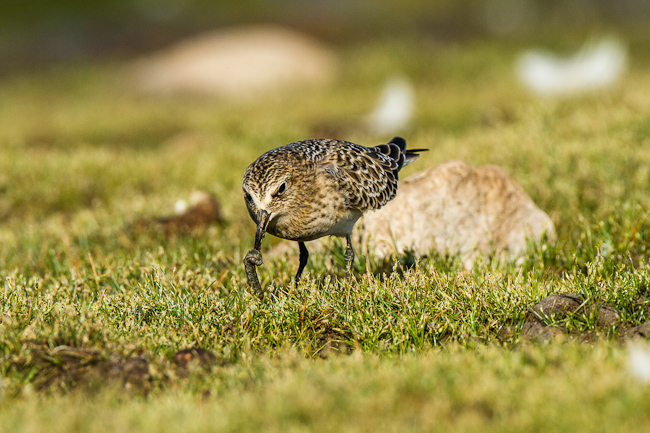
Shore birds, like this small piper, are often very wary, and will frequently observe the photographer. Low, slow and steady is the way to get close.
For birds in flight, you will want to consider an extra factors: tracking stability and framing stability. These have to do with how well you can track a bird in flight in general, and when tracking a bird in flight, how easily you can keep it centered around your selected AF points. If you are not highly skilled at tracking, or are skilled and just don’t have the most steady of hands, you will want to shorten focal length a bit. Small birds are rather difficult to capture in flight. They are not impossible, but they are tiny, fast, and change direction on a dime. They can be difficult for the best trackers. Most of the time you’ll probably be tracking medium and larger birds in flight.
If you generally need a 600mm lens to photograph the kind of birds you want to capture in flight, then you’ll probably want to knock off about 25% of that focal length to enlarge your frame relative to the bird. This will give you some leeway in terms of how well you track, helping keep the bird in-frame even if your tracking…or for that matter their flight…is erratic. Another reason to use a shorter focal length for BIF is to help you zero in on the subject. Zeroing in on a bird in flight at 600mm or beyond, unless its quite far away, can be difficult. However at 400mm, the bird is more than 2x smaller relative to the frame, making it a bit easier to track in on the subject and get it into your frame in the first place.
Getting Close
Now that you know what to look for in a lens for bird photography, you need to put it to good use. There are some general tips that work for all bird photography, however many of them will be bird specific. I’ll be writing more blogs in the future, hopefully shorter and more digestible in a sitting than this one, that will cover a photography of different kinds of birds. For now, the general stuff.
First and foremost, be polite. Birds don’t much like rude intrusions on their activities. When they encounter rudeness, their normal course of action is to bug out. Not only does this disrupt their activity, but it also deprives you of a subject. Some birds are more “proper” than others, expecting a greater degree of respect. A lot of this knowledge just comes with time and practice, as you encounter and photograph more birds. It’s important to be mindful of the behavior of birds, and try to be observant of when their behavior changes because of you. Not only will this help you put less stress on birds in general, but it will train your eye to notice the warning signs that indicate a bird is no longer comfortable and likely to run away.

A Great Blue Heron, showing signs it’s been spooked…retracted head, arched back, ready to take flight.
All birds have a comfort zone, or bubble of comfort as I like to call it. You breach the bubble, it is generally going to pop, and you all know what that means. A birds bubble of comfort is not necessarily a static radius from their center. As you spend a respectful amount of time around them, most species bubble of comfort, explicitly in relation to you, will shrink. The rate at which the bubble shrinks often depends on a variety of factors…from time of year to time of day, how recently they had last been spooked by something (especially you), and what other commotion is going on about them that they seem to be aware of. Also like a bubble, as it shrinks, it often becomes a little more resilient.
You can often encroach on a birds bubble of comfort without actually breaching it, putting pressure on it’s surface and kind of carving out a little space for yourself within. A bird will usually stop what its doing and gain alertness if you get this close. Look for this key change in behavior, and when it happens, stop. Go any farther and your most likely going to scare away your subject. It’s best not to maintain eye contact with your subject for long, ever…but particularly when they are explicitly aware of your encroaching presence. Averting your eyes when you’ve alerted a bird, examining something else, focusing your attention elsewhere for a while, will often give the bird time to become accustomed to your closer presence. The bubble of comfort will generally shrink at this point, and you can probably start photographing from where you are.
Most birds also have a definite “You’re too close!” zone. Breach this, and it really doesn’t matter how accustomed to your presence a bird is, they will always bug out. For some birds, the size of this zone is pretty static, for some it may vary depending on how comfortable with you they are. Not all birds have a definite bug-out zone, and some, especially if you feed them, are happy to be within touching distance (or even physical contact, if they are comfortable enough with you and your holding food!) There are ways to breach both the comfort bubble and the too-close zone, if you really need or want to. Wearing camouflage is a good start, however make sure everything is covered in camo. A shirt or coat and pants in camo is great, but if your hauling around a giant white lens, you’re a beacon to every bird within a few thousand feet. They KNOW you’re there, you can’t hide. So camo everything you can…particularly the lens, but also the tripod if you can (they tend to spook a variety of birds.)
On that note, you can choose to literally hide as well. Use of a permanent or portable photography hide is a good way to get real close, even breaching the zones. Some birds are suspicious of anything new that they see, so if you can’t hide the hide, you might need to set it up for a few days to let the locals get accustomed to it. A portable hide is a quick and dirty way to shroud yourself, and hopefully allow you to get closer…or rather, encourage the birds to come closer. Its best to set up a port-a-hide in an area that it is hard to notice to start with, so birds don’t notice it and need acclimation time. If you do set up a portable hide, its best to set it up when your subjects are not around. If they regularly see you in relation to a hide, they may well permanently associate it with human activity, defeating its purpose.
If you are lacking a hide, but have camo, you can use existing flora as a natural hide, or blind. The reveal, or the moment you pop out from behind existing brush, trees, reeds, whatever, is the easiest way to scare off birds. If you reveal yourself suddenly, it’s very likely all the birds in an area will bug out. Even those that can’t see you, if they see or hear a mass exodus, or any single bird sounds an alarm, most birds will fly away. You can either set up shop within a natural hide, and poke your lens out, or if that is not a possibility, you can reveal yourself slowly. A slow move around the edge of a natural blind, a baby step at a time, making sure you don’t startle any of your subjects. Use the same rules as for any move towards a bird subject…if they notice you, give them time to become accustomed to your presence, and keep eye contact brief at all times. Wearing camo that roughly matches your surroundings and your natural hide certainly helps as you move into a position where your lens has an unobstructed view of your subjects.
Getting the Shots
Once you are close enough to get a shot, with as many pixels on subject as you can, you need to frame and fire. How you frame your subject might depend on how large it is in-frame, and how much post-process recomposing capability (cropping capability) you want. If you intend to compose in-camera, (a task made a lot easier with Canon telephoto lenses that offer an easy way to reorient the lens and camera by rotating them within the lens’ tripod mounting ring), then you’ll definitely want to keep your subject in frame size larger than 50%, as close to 70-80% fill factor unless your composition involves more than just the bird. It should be noted that the bird may not be the only key factor in the frame. You may want to capture part of the birds mount, you may want to capture multiple birds in frame, you may just want to capture a bird portrait (in which case you could cut out part of the bird), etc.
Be mindful of the compositional opportunities, and leave space in frame for them if they occur. White space is also a key factor in the composition of a bird photo. As with wildlife photography, you want to leave room to account for your subjects gaze, and if possible, maybe even include the subject of their scrutiny. A bird looking left, framed such that it’s beak is near the left edge of the frame, will feel cramped. In that case you would want to position the bird more to the right, with empty space to the left of the frame. On the flip side, a bird looking left that is shoved all the way to the right will still look cramped. You want to keep some negative space around the subject at all times whenever you can (hence the reason why 90-100% fill factor is not really desirable, and why 70-80% works a lot better on average for in-camera composition, or 50%+ for composition in post.)
You may be wondering whether the “rules of composition” apply here. First off, let’s call them the Guidelines of Composition, because that is what they are. Composition is ultimately a matter of creativity and taste, don’t bind yourself with rigid rules. Personally, I very roughly follow the “Rule of Thirds” and the “Golden Ratio” when I’m composing my bird shots, but not exclusively. I usually have all grid displays turned off, so I don’t bother trying to be exact…it doesn’t matter anyway. If I am framing a perched bird looking “out” (to the left or right), I’ll usually use it’s eye as the focal point for composition. I may align it, horizontally, roughly on a thirds division…I may align it on a roughly 60/40 (golden ratio) division…I may also align it right at the 50% mark. If the bird is “observing the photographer”, where they have their head slightly angled towards you, but their beak still pointing “out”, I find myself more pleased aligning their eye horizontally at 50% or 60/40 than at one third. Vertical alignment is again a matter of taste, but its helpful to balance negative space on all sides of a bird.
It should be noted that a bird’s tail feathers can be a quirky factor of composition. They often end up at a convenient diagonal, and when lined up with a corner of the frame make for a nice lead-in. They can also be lined up roughly around rule of third’s points, or in golden ratio zones. Sometimes tail feathers just get in the way of the composition you really want on the bird. Generally speaking, it’s best to frame the bird in-camera such that it’s entire self, tail feathers included, fit in frame in a nice way. If they just don’t fit, and won’t allow you to compose the bird itself the way you want to, they can certainly be cropped out or excluded. Its easier to crop out tail feathers when they are already partially obscured by something, such as a branch and its leaves.
If the tail feathers matter but won’t generally fit in-frame, try a vertical composition. Many male birds have long, even flowing and ornate tail feathers, and can be a critical part of a bird photograph. Similar to tail feathers, when a bird is reflected in water, the reflection itself can often be a great element of composition. Include them if you can, although they can be treated the same as with tail feathers…crop them or exclude them from the frame if your can’t otherwise achieve your primary composition around the bird.
Some final notes before I wrap this blog up. The bird is your key subject, and should be prominent in the frame. Despite that, you should be mindful of other components of the frame, both complimentary as well as detrimental elements. Background detail can be a maker or a breaker. If background blur is noisy and contains too much detail, the bird might get lost within it, or be hard to make out properly. Also be ware of how much the background and the subject contrast…very strong contrast between the two can make any photograph difficult to observe. A bright background around a dark subject can make it near impossible to see all of the subjects detail. A light subject against a dark background that contains important nuances of tone can drown out the background nuances. Some amount of contrast in a background relative to the bird is good, but taking it to extremes can make for a difficult photograph to look at.
Finally, watch the intruders. Lots of non-subject detail can intrude on your scene. Other birds flying about in the background can be problematic, especially if they are the same species and color, and “attach” themselves to your subject. Other intruders might be branches, leaves, or other vegetation encroaching upon or even obscuring parts of your subject. Sometimes this is ok, such as a few leaves obscuring tail feathers that fall down the back side of a branch. Other times frame intruders that do not obscure your subject can be ok if they match or compliment the background, and are out of focus. Most other times, foreground intruders that are in focus and obscure your subject, or background intruders that make odd things protrude out of your subject at odd angles, should both be avoided. Sometimes you can eliminate background intruders in post, and a tool like Photoshop with Content-Aware Fill or a proper clone stamp tool can be extremely handy for this purpose. Foreground intruders that obscure a bird can be extremely difficult to clean up, especially if your bird is detailed and filled more than 50% of the frame. Feather detail doesn’t content-aware fill or clone-stamp well, and its usually obvious when you try. So, whenever your framing your subject, always remember: avoid intruders!
Using Photoshop’s Calculations tool for black and white conversion
One of Photoshop’s strengths (and, some would say, its weaknesses) is that there are usually various ways to achieve any given task. Black and white conversion is no exception, and in this post I’m going to show you a technique I often use to get quick, punchy black and white shots. It’s called the Calculations tool, and it works by taking two user-specified colour channels and blending them using a layer blending mode. It’s fast, simple, and gives good contrasty results.
Start by loading up the colour shot you want to convert. Then simply click Image > Calculations. You are presented with the following dialog box:
Here you can choose the two colour channels you want to blend, and the mode you want to blend them with. What you choose here depends on what results you want.
A good starting point is to set one channel to Red, another to Green, and the blend mode to Overlay. Boom, instant punchy black and white! You can change the channels selected to see what effect they have: experiment. The modes i use most are overlay, soft light and multiply. Overlay and soft light give very punchy results, with strong blacks and whites, while using multiply with both channels set to Red gives great dramatic dark skies. You can change the opacity of the blend underneath the blend mode dropdown, which alters the strength of the effect. Once you have decided on the settings you want, change the last dropdown from New Channel to New Document and click OK.
You now have a new black and white image. You will note, however, that the image mode is set to ‘Alpha’. Before you can edit the image in any useful way, you first need to convert this to RGB. To do this, click Image > Mode > RGB. You can now edit the image as you would any other.
You can, of course, perform the Calculations command multiple times on the same colour image using different settings. In the image below, I converted the colour original once using a Red/Green Overlay calculation to get the foreground, and then again with Red/Red Multiply to get the sky, and then blended the two shots using the technique detailed in this post.
Next time you want to convert a shot to black and white, give Calculations a try, and let us know how you get on.
The G-Series Canon always meant to make
The Canon Powershot G1 X is currently the top-of-the-line fixed lens camera from Canon. The 1 in the name represents a fresh start for the G-series which has existed for a long time. They had G12, G11, G10, G9 and many more before that, skipping only a few digits in the series. From the start, these cameras were designed as advanced models with full manual controls and a good number of buttons and dials for efficiency. The series quickly became popular among photographers looking for a camera to use when they didn’t have their professional gear.
Yet one day, August 19th, 2009, the Canon G-series made sense no more. Canon had launched the Powershot S90. The S90 took exactly the same sensor as the G11 and put it behind a fast F/2 lens in a smaller body with dual control-dials. In doing so, they let the S90 produce better images than the G11 by shooting at a lower ISO and even more efficiently at that, since the G11 only had one control-dial. The S90 did lose the hot-shoe of the G-series but people rarely use flashes with such a small camera. After all, most add-on flashes are heavier than the camera and if you are carrying big heavy stuff, you probably have a corresponding camera with you too. 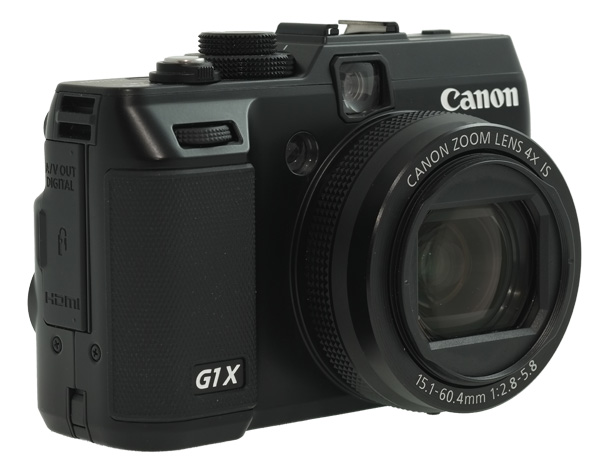 Then, on January 9th, 2012, Canon unveiled the G1 X, doing the one thing that cannot be reproduced in the smaller S-series: They fitted the G1 X with a relatively huge 1.5″ CMOS sensor. The newly designed 14 MP sensor is between the size of a Four-Thirds and APS-C sensor, giving the potential for truly high-quality images.
Then, on January 9th, 2012, Canon unveiled the G1 X, doing the one thing that cannot be reproduced in the smaller S-series: They fitted the G1 X with a relatively huge 1.5″ CMOS sensor. The newly designed 14 MP sensor is between the size of a Four-Thirds and APS-C sensor, giving the potential for truly high-quality images.
Before getting to how it performs, a few words about its usability. The Canon Powershot G1 X is joy to use. Its a simple camera which behaves in the expected way most of the time. The traditional mode-dial, dual control-dials and even EC dial makes things very easy and unsurprising. Dial the exposure mode you want and use the front control-dial to set the main exposure parameter. In Manual mode, use the rear control-dial to set the second parameter, usually shutter-speed but that is configurable. The only time a dial gets overloaded is when in Manual exposure-mode and in Manual focus mode. In this case, the rear dial serves dual functions and so does the metering button which serves to switch between controlling the secondary exposure parameter and the focus distance.
For setting the ISO, there is the Up direction of the 4-way controller and for setting EC, there is a dial underneath the mode-dial. Each are straight forwards. The only other two key functions I regularly use are the self-timer and white-balance. Those are accessible via Canon’s classic Function menu which is relatively efficient to use. One of these functions can be assigned to the customizable Shortcut button but the G1 X has something else which is interesting to put there… a built-in 3-stop ND filter. ND filters allow longer shutter-speeds to be used to get motion blur and light trails. Here is a 60s exposure with the ND filter enabled.
So, overall the G1 X is quite intuitive and easy to use. Having a zoom lens, as opposed to a fixed prime lens as other large-sensor compacts, also allows a lot of framing flexibility. There are some nitpicks which could be improved in terms of ergonomics but nothing really serious.
Image quality is the first thing we judge cameras by and the Canon Powershot G1 X really excels at it. Good quality was certainly expected given the sensor size but I am surprised of how good it is. Without a doubt, the G1 X produces completely usable results until ISO 3200. There is some noise visible there and some at ISO 1600 too but it is on the same level as a top-of-the-line cropped-sensor (APS-C) DSLR. There is obvious noise at ISO 6400 but nothing which would show in a small-to-medium size print. Even ISO 12800 produces some nice 4″ x 6″ prints, actually 4″ x 5 1/3″ because the G1 X has a 4:3 aspect-ratio instead of the usual 3:2 ratio of most DSLRs.
Image quality is more things than noise and the G1 X manages well in other areas. Shooting RAW it is possible to overcome some issues since the JPEG engine is not great at color-accuracy and auto white-balance leaves the occasional bluish cast in low-light and yellow or magenta cast under artificial light. One area where it could be improved is in terms of exposure. The Evaluative meter blows highlights more often than I would like. This is somewhat a personal choice but it means moving the EC dial towards the negative side more often than I am used to. One trick is to use the AE-L (*) button to lock an exposure with more bright areas which cause the meter to chose a darker exposure. This was my preference over EC since AE-L is reset after each shot.
The one area where the G1 X is behind cameras in the same price range is autofocus performance. In good light and towards the wide-end of the zoom, there is really not much to complain about. However, in low-light it gets quite slow. It also gives up focusing more than a typical compact. Zoom in towards the telephoto end and autofocus in low light constantly takes over 1s which is way too long for moving subjects. It is obvious that the dim F/5.8 maximum aperture at the long end has something to do with it but also the large sensor which requires much more precise focusing than the average compact digital camera.
Overall all, the Canon Powershot G1 X is impressive. Image quality is truly excellent. Plus, the camera is simple to use and intuitive. The zoom range is good for a variety of subjects. For moving subjects and obviously action photography, I certainly have some reservations but for general travel and day-to-day photography it is a great way to avoid carrying a bulky DSLR plus lenses around. As always, whether this is the right camera depends on your needs but Canon clearly has an winner with the G1 X.
PS: A gallery of full-resolution Canon Powershot G1 X images should be available on my site towards the end of next week.

